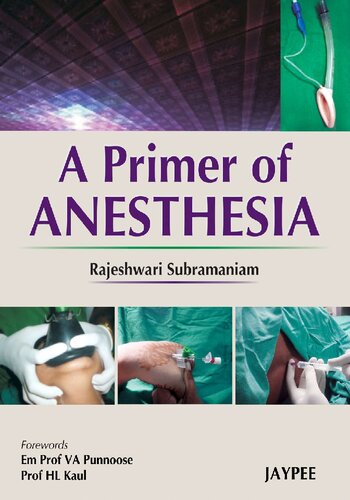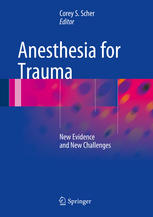Description
Anesthesia is a critical component of modern medicine, and understanding its fundamentals is essential for medical undergraduates. Anesthesia is a medical specialty focused on providing a pain-free and safe experience for patients during surgical procedures. Here’s a primer on anesthesia for undergraduate students:
- Introduction to Anesthesia:
- Anesthesia is a branch of medicine that involves the use of drugs to induce a state of unconsciousness, eliminate pain, and provide muscle relaxation during surgical procedures.
- Types of Anesthesia:
- There are three primary types of anesthesia: a. General Anesthesia: Induces unconsciousness and loss of sensation throughout the entire body. b. Regional Anesthesia: Blocks sensation in a specific part of the body (e.g., epidurals, nerve blocks). c. Local Anesthesia: Numbs a small, specific area, often used for minor procedures.
- Anesthesia Team:
- The anesthesia team typically consists of an anesthesiologist (a medical doctor specializing in anesthesia) and nurse anesthetists.
- Preoperative Assessment:
- Evaluating the patient’s medical history, physical condition, and any allergies to drugs is essential.
- Assessment of airway, breathing, and circulation (the ABCs) is crucial before administering anesthesia.
- Anesthetic Agents:
- Anesthetic agents include inhalational agents (like sevoflurane), intravenous agents (like propofol), and muscle relaxants.
- Analgesics, such as opioids, are used for pain management.
- Monitoring:
- Continuous monitoring of vital signs (heart rate, blood pressure, oxygen saturation) is critical during anesthesia.
- Capnography is used to monitor the exhaled carbon dioxide levels, providing information about ventilation.
- Airway Management:
- Proper airway management is essential to ensure the patient can breathe while under anesthesia.
- Endotracheal tubes or supraglottic airway devices are used to maintain a patent airway.
- Intraoperative Care:
- Anesthesia providers monitor the patient’s vital signs, administer anesthetic agents, and adjust them as needed during surgery.
- Emergencies and Complications:
- Anesthesia providers are trained to respond to emergencies such as anaphylaxis, cardiac arrest, or airway obstructions.
- Recovery and Postoperative Care:
- Anesthesia providers oversee the transition from the anesthetized state to consciousness in the recovery room.
- They continue to manage pain and monitor for complications.
- Anesthesia Specializations:
- Anesthesia encompasses various subspecialties, including pediatric anesthesia, cardiac anesthesia, obstetric anesthesia, and critical care medicine.
- Ethical and Legal Considerations:
- Anesthesia providers must adhere to ethical principles and legal regulations while providing care.
- Informed consent and patient confidentiality are crucial aspects.
- Recent Advances:
- Stay informed about the latest advancements in anesthesia techniques, equipment, and medications.
- Professional Organizations:
- Consider joining organizations like the American Society of Anesthesiologists (ASA) or the European Society of Anaesthesiology (ESA) to stay updated on developments in the field.
- Resources:
- Textbooks, journals, and online resources are available to enhance your knowledge and understanding of anesthesia.
Remember that this is just a primer, and anesthesia is a vast and complex field. If you are interested in pursuing a career in anesthesia, you will receive comprehensive training during your medical studies and residency. Always seek guidance from experienced professionals and your educators to deepen your knowledge and skills in this vital medical specialty.





Reviews
There are no reviews yet.